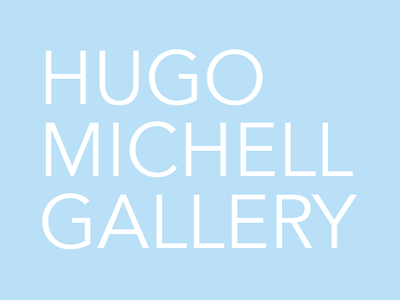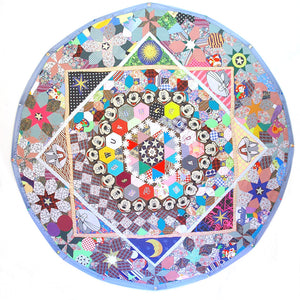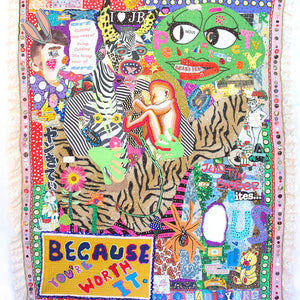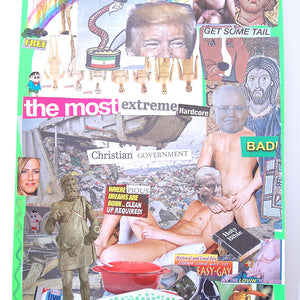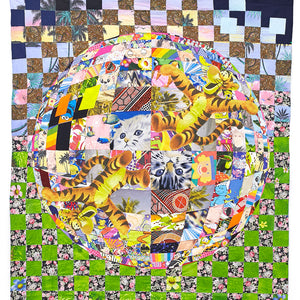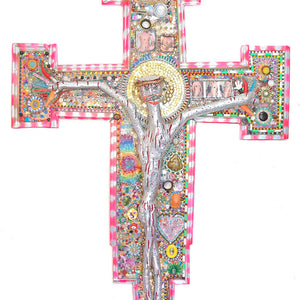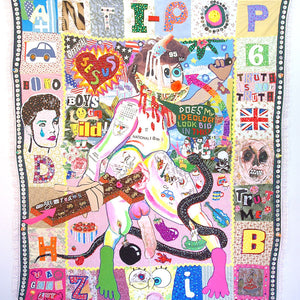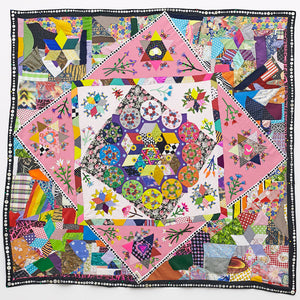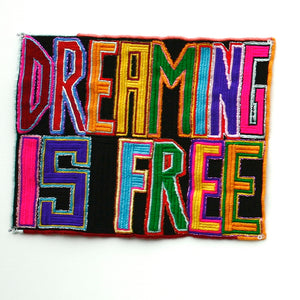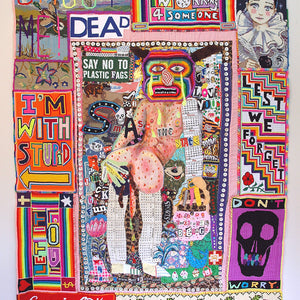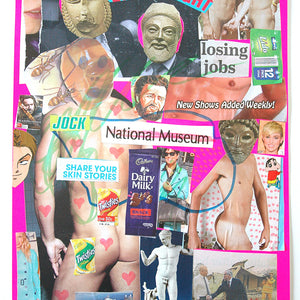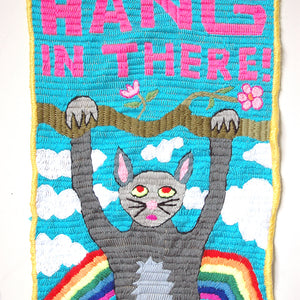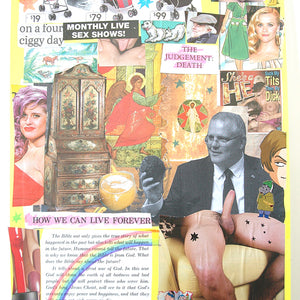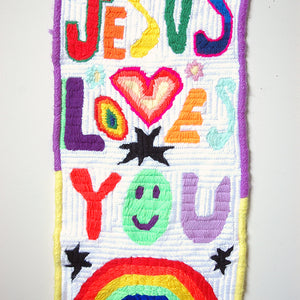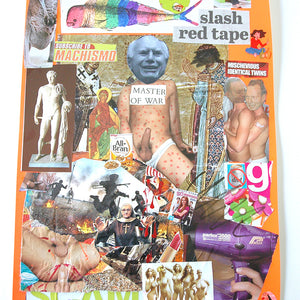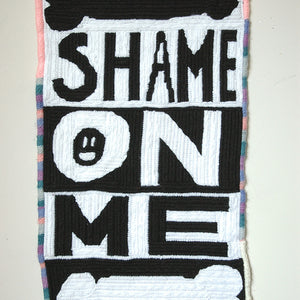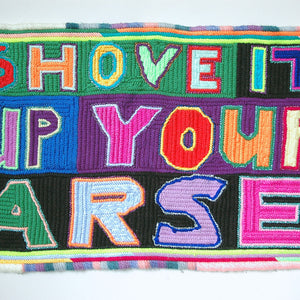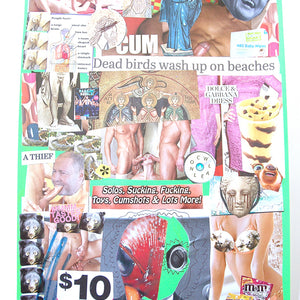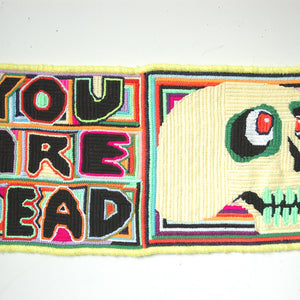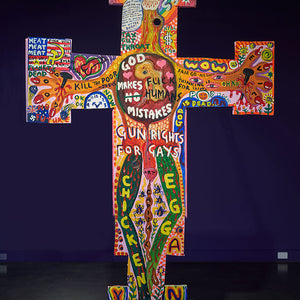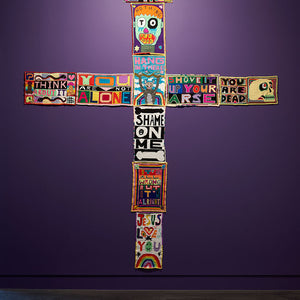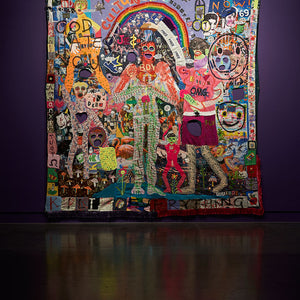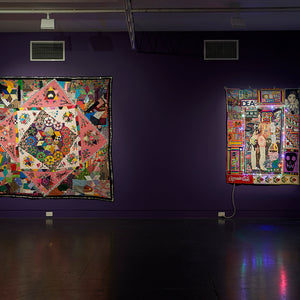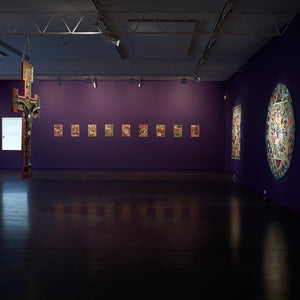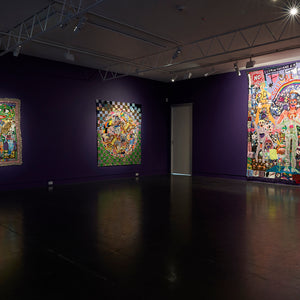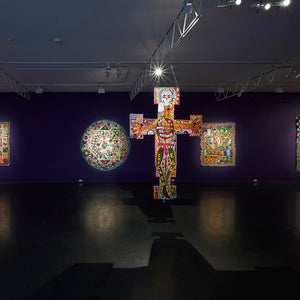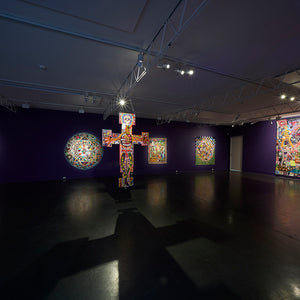'Crown of Thorns' by Paul Yore
Gippsland-based artist Paul Yore’s solo exhibition ‘Crown of Thorns’ brings together new textiles, assemblages and collages, continuing the artist’s decade-long personal and candid investigation into the intersection of religion, sex, politics and popular culture. Taking its title from a passage in the Gospel of Mark in which Jesus is mockingly dressed in purple and adorned with a crown of twisted thorns, Yore’s exhibition readily draws upon the iconography of his Catholic upbringing, most notably the cross or crucifixion. However, Yore’s irreverent treatment of traditional subjects is laced with a queer critique of the foundational institutions of “Western” society; specifically the moralising presence of a corrupt Church, and its role in propping up a broken political system, a dynamic which in turn has fueled centuries of colonial violence, as well as the subjugation of women, trans and queer people. Further, these bastardised, mock forms point to a world in which spectacle and waste have replaced any meaningful actuality, a world within which the boundaries between art, advertising, pornography and pop culture are increasingly blurred, and any real, outward existence of ecology and community is directly threatened by the individualistic, inward descent into a mirage of false images and half-truths.
This exhibition centres around a large-scale appliqued textile ‘NO FUTURE DIRECTION’, which was created during a month long residency in 2019 at Slade Art School in London, in conjunction with the Camden Arts Centre. The piece is based on a drawing Yore made in the National Gallery in London from Piero della Francesca’s painting The Baptism of Christ (c. 1450).
Yore’s innovative textile pieces utilise traditional quilting methodologies wherein a multiplicity of reclaimed materials are painstakingly brought together into a singularity. For Yore, this is the cathartic aspect of the work, the possibility of collapsing arbitrary boundaries and bringing into uncomfortable proximity disparate forms, in order to reveal the truer nature of things. In this way, Yore’s radical queer art probes deep into the collective anxieties of our social order. His collaging of found materials calls into question the inherent duplicity and instability of our most firmly held beliefs, values and assumptions about the world, at a time when fear and populism loudly drown out desperately needed sober discourse.
